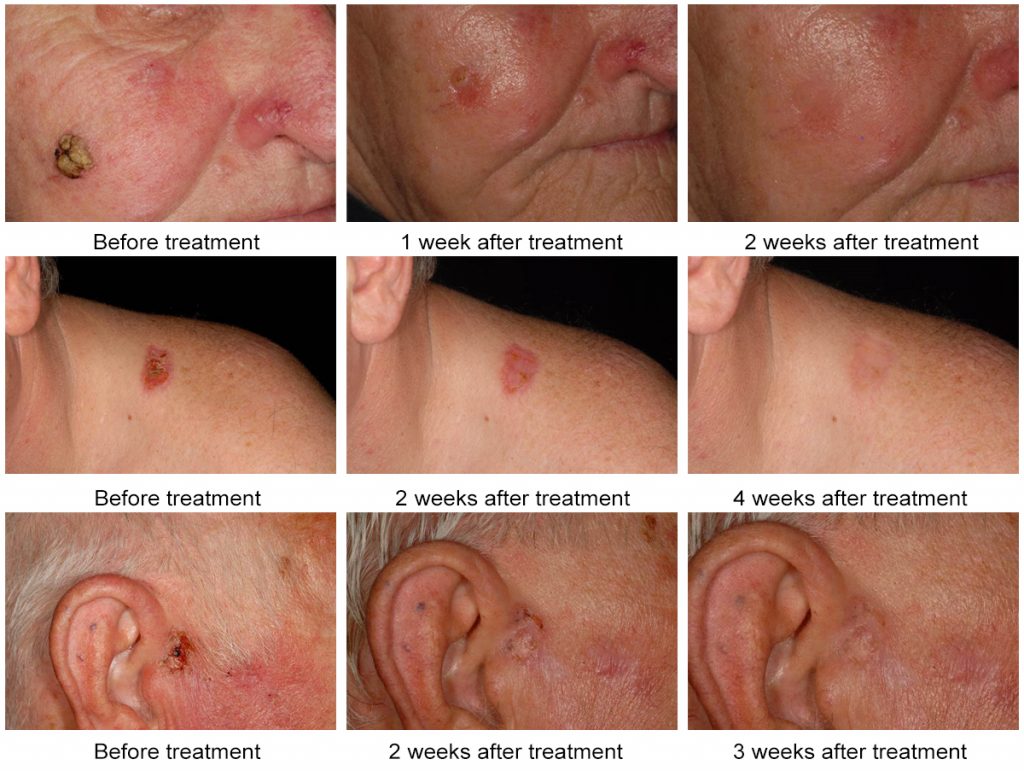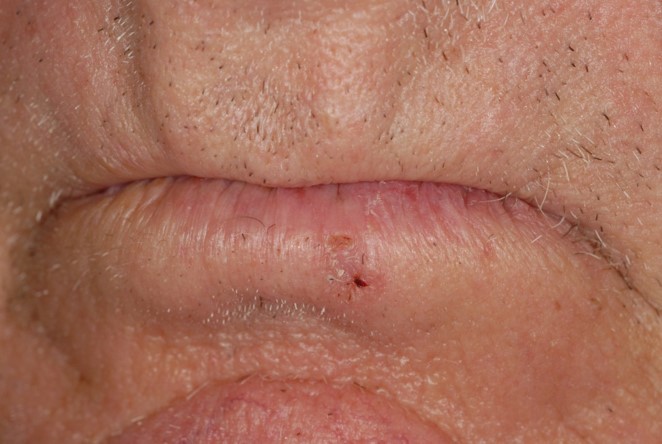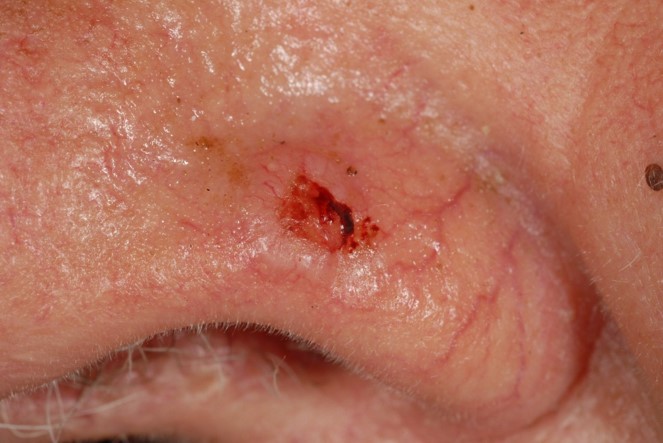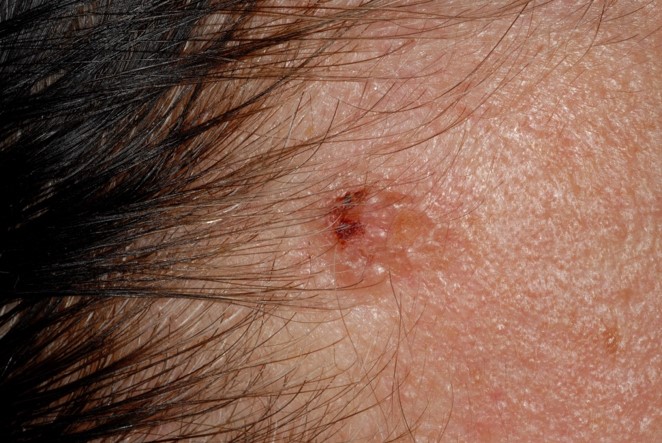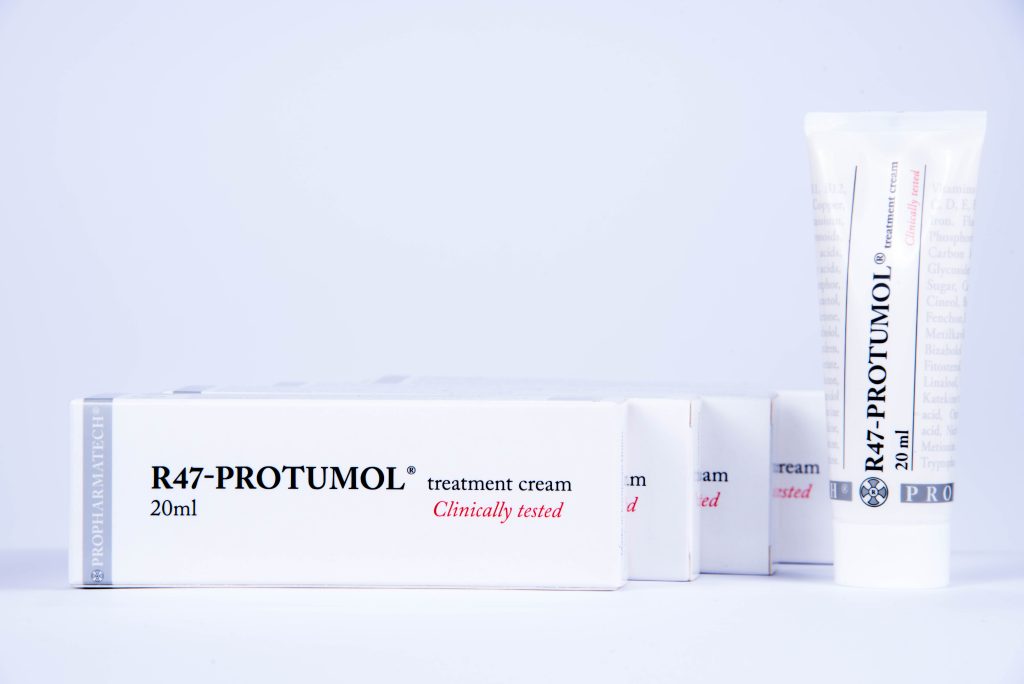
Squamous cell carcinoma (SCC) is a type of skin cancer
Squamous cell carcinoma (SCC) is a health condition involving the uncontrolled growth of the outer squamous cells of the epidermis, which is the outermost layer of the skin. SCC occurs as a result of keratinization of the epidermal cells and has the potential to metastasize to other regions of the body. The presentation of SCC can occur on any area of the body but is most common in areas that are frequently exposed to ultraviolet (UV) radiation, such as the ears, lips, face, neck, head, arms, and legs.
SCC can be classified as either “in situ,” which indicates that the cancer is confined to the localized site, or “invasive,” which involves the surrounding tissues and has the potential to spread to other organs in the body. Non-invasive carcinoma may also be referred to as Bowen’s disease.
„Medicus curat, Natura sanat” - Doctors treat, Nature heals. We help you treat Skin cancer with our innovative product!
Clinically tested ● No prescription required ● Not a medicine ● Quick and efficient ● Zeros side effects ● Safe ● Contains solely vegetable active ingredients ● Zero hospital intervention ● Zero doctor’s assistance ● Can be applied at home at work and in leisure time ● Anyone can use it at any age ● Simple to use ● It can be applied on the whole surface of the body ● No need to cover the surface after applying the cream ● The cream is non-sticky ● Absorbs quickly, like a face cream ● It leaves no stain on clothes ● It doesn’t have an unpleasant smell

J. Seguin
Paris – France
A dermatologist diagnosed a basal cell carcinoma on my back one year ago. The doctor said that before the operation I should try out a cream and I may not need the operation. I used R47-PROTUMOL® cream three times a day. The basal cell carcinoma started to nicely shrink and it was completely gone in 5 months. I didn’t need the operation.
M. Bertrand
Marseilles- France
I am a sailor so I am exposed to a lot of solar radiation. As a result of the sunlight a mole on my shoulder turned into a malignant basal cell carcinoma. From my colleagues I heard about R47-PROTUMOL® cream and how effective it was against skin cancer. I started to use it myself. It proved to be efficient very soon. Within three weeks the size of the tumor decreased by 50%. After six months only a faint spot remainds me of the tumor.
L. Siméon
Monte Carlo – Monaco
In Monaco the number of hours of sunshine is high all year round. A pea-sized wound formed on my forehead. After dermatological examination I was told that I had skin-cancer. I read in the Jet Set Côte d’Azur magazine how effective the R47-PROTUMOL® cream is against skin cancer and actinic keratosis. After a few months of treatment the cream eliminated the skin cancer on my forehead.
F. Maréchal
Nice – France
Actinic keratosis formed on my face as a result of strong solar radiation. Following my doctor’s recommendation I started to use the R47-PROTUMOL® cream. Within a relatively short period the actinic keratosis was gone. Because I spend a lot of time outdoors in the sunlight and my skin is sensitive I’ve since had actinic keratosis and basalioma on other parts of my body too. R47-PROTUMOL® cream provided me full support. I’ve never had to undergo any operation.
H. Fischer
Berlin – Germany
I had ulcerated basal cell carcinoma. The ulcer could not be eliminated with traditional treatments. As long as the tumor is ulcerated it cannot be operated. The situation got worse with every passing day. I had to find a solution because this ulcerated tumor can cause death. R47-PROTUMOL® cream was recommended to me by a patient in the hospital. I purchased it and started using it. After two weeks of treatment the ulcerated wound started to close down. After three months of using the cream the wound completely closed down and its size decreased from 3 centimeters to 4 millimeters. I returned to the hospital and the dermatologist said that it could be operated on. It was cut out, I am absolutely healthy but just in case I continue using the cream.
K. Ulrich
Hamburg – Germany
I had skin cancer. I treated the cancerous surface with R47-PROTUMOL® cream. The cream was so effective for me that even my doctor was surprised how fast it proved to be effective for me.
G. Klein
Vienna – Austria
I was diagnosed with basal cell carcinoma on my neck. I was operated on. After the operation the operation scar didn’t heal, I visited the doctor’s office almost every day. I learnt about R47-PROTUMOL® cream, I purchased one and I applied it on the skin twice a day. After approx. two weeks a thin pellicle formed on the wound, the exudation stopped, the diameter of the wound nicely decreased. For the first time after one and a half years I started to see some hope that I may recover. For the moment I use the cream once a week, only a light red spot reminds me of my wound.
F. Berger
Salzburg – Austria
So far I have been operated on for actinic keratosis four times. On every occasion this skin malformation formed on a different spot on my face. My dermatologist recommended treating my facial skin with the R47-PROTUMOL® cream for prevention. I followed the recommendation I have been using the cream for three years. Since then I haven’t had another actinic keratosis.
S. Steiner
Geneva – Switzerland
I had basalioma on my face. My French friends recommended the R47-PROTUMOL® cream. I applied the cream on the affected surface. Within one month the basal cell carcinoma started to heal, in three months it was completely gone.
A. Pliszeckaja
Moscow – Russia
My skin is very sensitive. So far I’ve had basal cell carcinoma on my face three times. Twice I had actinic keratosis on my shoulder. Altogether I’ve been operated on five times. In Monaco my husband gave me a copy of the Jet Set Côte d’Azur magazine. It was from this magazine that I got to know about R47-PROTUMOL® cream. After returning to Moscow we ordered the cream that I’ve been using ever since. I haven’t had another basal cell carcinoma or actinic keratosis even though I spend a lot of time at the sun. What’s more I find this cream to be more beneficial to my skin than any of the expensive face creams. The large amount of plant-based active agents and vitamins give a young look to the skin.
B. Belinszkij
Saint Petersburg– Russia
I got diagnosed with a malignant melanoma on my arm. I got very scared because I know that in 80% of the cases melanoma causes death. A friend of mine who is a diplomat in the EU brought me some R47-PROTUMOL® cream. After four months of using the cream I was symptom free. I’ve continued using the cream since then, I apply it at least once a day on the surface of the once existing melanoma.
M. Kralova
Kosice – Slovakia
I treated a basal cell carcinoma in the corner of my mouth with R47-PROTUMOL® cream. After two weeks the size of the skin cancer was so small that only a small spot could be seen. My doctor suggested that I should continue the treatment with the cream and I may not have to be operated on. I didn’t need the operation because the basal cell carcinoma completely vanished from the corner of my mouth. I am very grateful for the creators of this cream.
S. Zakar
Budapest – Hungary
I read about the R47-PROTUMOL® cream in a paper, telling how effective it is in treating skin cancer. It was a birthmark on my back which degenerated, and turned into a malignant melanoma, with a 2 cm diameter and a 1 cm height. 2 months ago I bought the cream, and my wife applied it on the surface of the melanoma twice a day. Presently, the diameter is less than 1 cm, and has no height, it completely subsided, as it became even with the normal skin surface. It is reducing day by day.
Sz. Kovács retired teacher
Budapest – Hungary
A pea-size lesion appeared on my forehead. I could not trace it back to any antecedent. After a dermatological examination I was told that I have melanoma skin cancer, and I need to be operated on. After the surgery the scar did not start healing, and I was visiting the doctor’s office almost every day. I got quite depressed as, it being a not too big scar, I undertook all prescribed therapy. I heard about the R47-PROTUMOL® treatment cream, I bought one, and applied it on the scar twice a day. It was after about two weeks that a thin film appeared on the scar, it stopped exuding juice, and its diameter also neatly reduced. It was the first time after one and a half years that I had a flash of hope that I might recover. For the time being I apply the cream once a week, and by now it is only a pale red spot that witnesses my scar.
K. Radnai
Győr – Hungary
An ulcerous tumour was removed from the ridge of the nose between the eyes. To my greatest surprise the scar did not heal. It exuded juice, then after 1-2 days a thin film developed, but then it got ulcerated again. I ordered a tube of the R47-PROTUMOL® cream to give it a try. I applied it on the above-mentioned scar daily. After a week the scar started to contract, exuding juice ceased, and the scar nicely healed. Now I am applying the cream only once a week.
F. Angyal
Budapest – Hungary
I am suffering from ulcerated melanoma skin cancer. It cannot be operated on. In “Zöld Újság” (Green Magazine) I read the letters of people suffering from similar diseases. I thought I myself will try using the R47-PROTUMOL® cream. The cancer appeared on the part behind the ear. I apply the cream on the surface twice a day, and healing process started within 10-11 days after I started to do so. The scar has healed over.




Trusted by Thousands of Happy Customers Since 2006
Here are some reviews from our customers from around the world.Hover on the markers on the map to see user reviews.
Of course, there may be individual differences from those shown here. Results may vary from individual to individual and are not guaranteed.

How to use the R47-PROTUMOL® treatment cream?
- For Skin cancer: Apply the Cream on the skin surface to be treated in a thin layer three times a day: in the morning, at noon, and in the evening.
- For Breast cancer: Apply the cream in a thin layer three times a day on both breasts and the armpits. It is recommended to apply the cream on both breasts and armpits even if the tumor is present only in one breast. The R47-PROTUMOL® cream is safe and effective in case of ulcerous tumor too.
- Note: Before each application wash the surface with ample water so that the layers of the cream don't stack up on each other. Washing the surface is necessary because layers of cream on top of each other block the absorption of the active ingredients.
It is not recommended to use the R47-PROTUMOL® treatment cream on the same skin surface simultaneously with other creams or body lotions or any other product of cutaneous use.
Qualities of the R47-PROTUMOL® treatment cream
The active ingredients of the cream consist of such different groups of ingredints that have anti-cancer and immune-system strengthening effects, such as e.g. antioxidants, several vitamins, minerals, carbohydrates, proteins, flavonoids, enzymes and organic acids.
- What characteristics do these materials have?
- Antioxidants defend the organism against the deleterious effects of the free radicals and so they slow down the aging of the cells, hold down the malignant degeneration of the cells, and support the immune system.
- Vitamins: the building blocks of our body, they defend the organism against the deleterious effects of the free radicals acting against the organism, thus slowing down the aging of the cells, holding down the malignant degeneration of the cells, and supporting the immune system.
- Flavonoids: they have an anti-cancer effect.
- Amino acids: they play a decisive role in building up the proteins.
- Proteins: indispensible constituents of all cells.
- Carbohydrates: their main physiological role is energy production.
- Enzymes: bio-catalysts of the processes going on in the human body.
- Minerals – their macro and micro elements, which are so called elements providing vitality, play an important role in the smooth functioning of the organism.
- Trace elements, which strengthen the organism, help recovering from illnesses, and are of help against the development of tumorous diseases.
R47-PROTUMOL® treatment cream for Skin cancer & Breast Cancer
We help you treat Skin cancer and Breast cancer with our innovative product!
Skin cancer:
• More than 940 million people worldwide suffer from Squamous cell carcinoma and Basal cell carcinoma.
• According to one estimate, about 5.4 million basal cell carcinoma are diagnosed each year in the US.
• According to a report by the WHO, the number of skin tumor patients will double by 2040.
Breast cancer: Extract from the observations of Dr. Maria Pecsek MD
• We applied the R47-PROTUMOL® Cream in histologically proved malignant cases of mutations close to the skin surface, besides regular control. The R47-PROTUMOL® Cream was applied 2-3 times a day regularly, with a control six months later. The big breast tumour of the patient, which was reduced to a 1 cm size due to the treatment, became removable. The patient was operated on, and the 1cm size tumour was removed. After the operation histological examination found only 1-2 malignant groups of cells in the mutation.
• How to use the R47-PROTUMOL® treatment cream for breast cancer: Apply the cream in a thin layer three times a day on both breasts and the armpits.
It is recommended to apply the cream on both breasts and armpits even if the tumor is present only in one breast. The R47-PROTUMOL® cream is safe and effective in case of ulcerous tumor too.
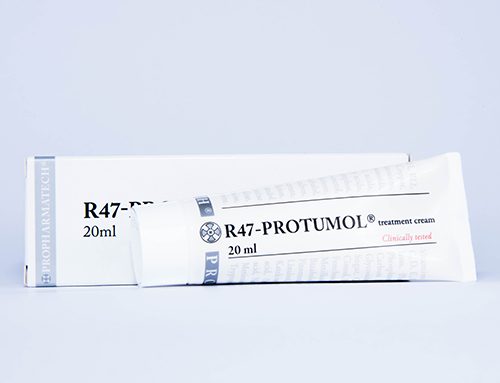
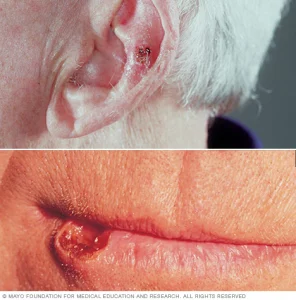
Squamous cell carcinoma (SCC) is a type of skin cancer
Squamous cell carcinoma (SCC) is a health condition involving the uncontrolled growth of the outer squamous cells of the epidermis, which is the outermost layer of the skin.
SCC occurs as a result of keratinization of the epidermal cells and has the potential to metastasize to other regions of the body. The presentation of SCC can occur on any area of the body but is most common in areas that are frequently exposed to ultraviolet (UV) radiation, such as the ears, lips, face, neck, head, arms, and legs.
SCC can be classified as either “in situ,” which indicates that the cancer is confined to the localized site, or “invasive,” which involves the surrounding tissues and has the potential to spread to other organs in the body. Non-invasive carcinoma may also be referred to as Bowen’s disease.
Symptoms
Squamous cell carcinoma of the skin most often occurs on sun-exposed skin, such as your scalp, the backs of your hands, your ears or your lips. But it can occur anywhere on your body, including inside your mouth, the bottoms of your feet and on your genitals.
Signs and symptoms of squamous cell carcinoma of the skin include:
- A firm, red nodule
- A flat sore with a scaly crust
- A new sore or raised area on an old scar or ulcer
- A rough, scaly patch on your lip that may evolve to an open sore
- A red sore or rough patch inside your mouth
- A red, raised patch or wartlike sore on or in the anus or on your genitals

When to see a doctor?
Make an appointment with your doctor if you have a sore or scab that doesn't heal in about two months or a flat patch of scaly skin that won't go away.
Dangerous skin problems:
- Basal cell carcinoma
- Actinic keratosis
- Squamous cell carcinoma
- Kaposi-sarcoma
- Melanoma
Causes
Squamous cell carcinoma of the skin occurs when the flat, thin squamous cells in the middle and outer layers of your skin develop changes (mutations) in their DNA. A cell's DNA contains the instructions that tell a cell what to do. The mutations tell the squamous cells to grow out of control and to continue living when normal cells would die.
Most of the DNA mutations in skin cells are caused by ultraviolet (UV) radiation found in sunlight and in commercial tanning lamps and tanning beds.
But sun exposure doesn't explain skin cancers that develop on skin not ordinarily exposed to sunlight. This indicates that other factors may contribute to your risk of skin cancer, such as having a condition that weakens your immune system.
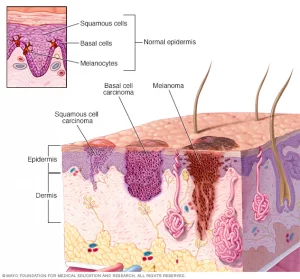
Risk factors
Factors that may increase your risk of squamous cell carcinoma of the skin include:
- Fair skin. Anyone, regardless of skin color, can get squamous cell carcinoma of the skin. However, having less pigment (melanin) in your skin provides less protection from damaging UV radiation.
- If you have blond or red hair and light-colored eyes and you freckle or sunburn easily, you're much more likely to develop skin cancer, including squamous cell carcinoma, than is a person with darker skin.
- Excessive sun exposure. Being exposed to UV light from the sun increases your risk of squamous cell carcinoma of the skin. Spending lots of time in the sun — particularly if you don't cover your skin with clothing or sunblock — increases your risk of squamous cell carcinoma of the skin even more.
- Use of tanning beds. People who use indoor tanning beds have an increased risk of squamous cell carcinoma of the skin.
- A history of sunburns. Having had one or more blistering sunburns as a child or teenager increases your risk of developing squamous cell carcinoma of the skin as an adult. Sunburns in adulthood also are a risk factor.
- A personal history of precancerous skin lesions. Having a precancerous skin lesion, such as actinic keratosis or Bowen's disease, increases your risk of squamous cell carcinoma of the skin.
- A personal history of skin cancer. If you've had squamous cell carcinoma of the skin once, you're much more likely to develop it again.
- Weakened immune system. People with weakened immune systems have an increased risk of skin cancer. This includes people who have leukemia or lymphoma and those who take medications that suppress the immune system, such as those who have undergone organ transplants.
- Rare genetic disorder. People with xeroderma pigmentosum, which causes an extreme sensitivity to sunlight, have a greatly increased risk of developing skin cancer.
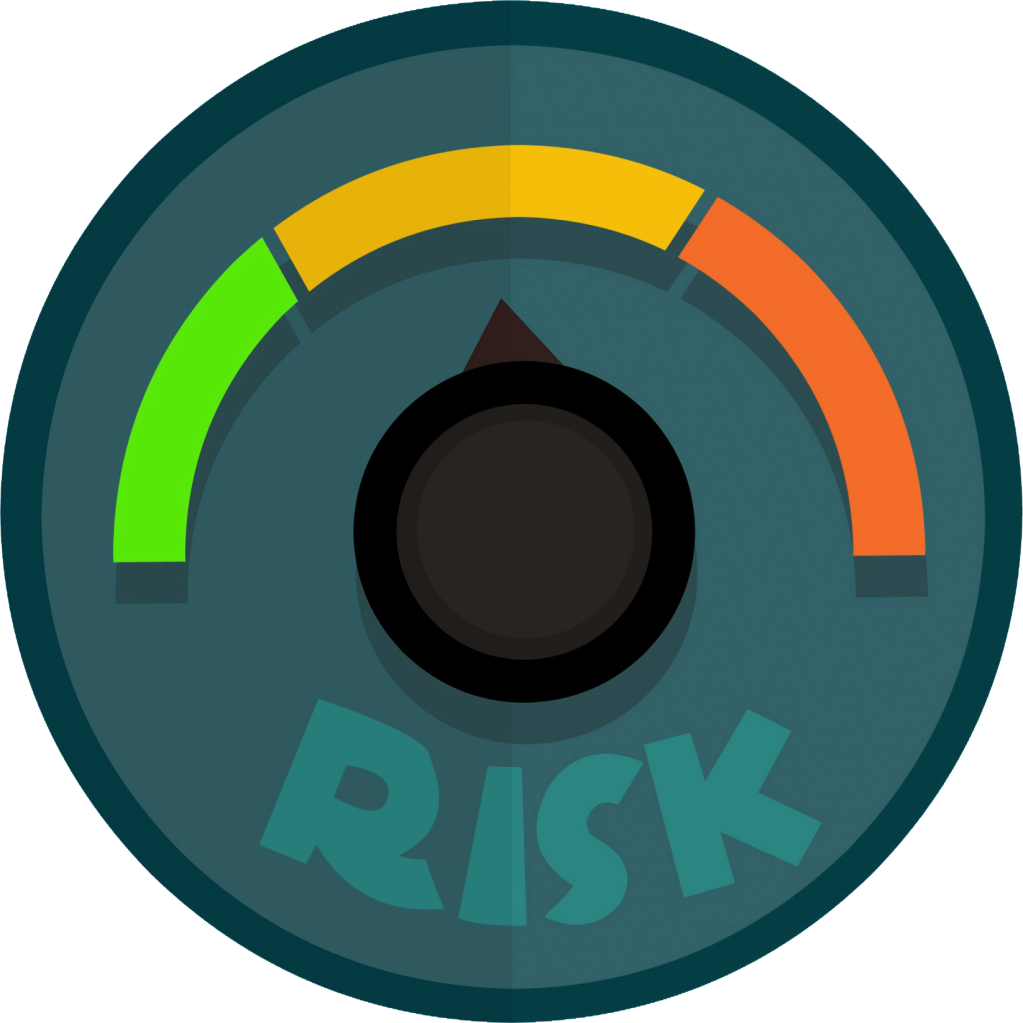

Complications
Untreated squamous cell carcinoma of the skin can destroy nearby healthy tissue, spread to the lymph nodes or other organs, and may be fatal, although this is uncommon.
The risk of aggressive squamous cell carcinoma of the skin may be increased in cases where the cancer:
- Is particularly large or deep
- Involves the mucous membranes, such as the lips
- Occurs in a person with a weakened immune system, such as someone who takes anti-rejection medications after an organ transplant or someone who has chronic leukemia
First aid for the skin with the clinically tested plant-based R47-PROTUMOL® treatment cream.
Skin regenerator. Quick and efficient. No side-effects.
Prevention is an investment in the future!
Most squamous cell carcinomas of the skin can be prevented. To protect yourself:
- Avoid the sun during the middle of the day. For many people in North America, the sun's rays are strongest between about 10 a.m. and 3 p.m. Schedule outdoor activities for other times of the day, even during winter or when the sky is cloudy.
- Wear sunscreen year-round. Use a broad-spectrum sunscreen with an SPF of at least 30, even on cloudy days. Apply sunscreen generously, and reapply every two hours — or more often if you're swimming or perspiring.
- Wear protective clothing. Cover your skin with dark, tightly woven clothing that covers your arms and legs, and a broad-brimmed hat, which provides more protection than does a baseball cap or visor.
Some companies also sell protective clothing. A dermatologist can recommend an appropriate brand. Don't forget sunglasses. Look for those that block both types of UV radiation — UVA and UVB rays. - Avoid tanning beds. Tanning beds emit UV rays and can increase your risk of skin cancer.
- Check your skin regularly and report changes to your doctor. Examine your skin often for new skin growths or changes in existing moles, freckles, bumps and birthmarks. With the help of mirrors, check your face, neck, ears and scalp.
Examine your chest and trunk and the tops and undersides of your arms and hands. Examine both the front and back of your legs and your feet, including the soles and the spaces between your toes. Also check your genital area and between your buttocks.



